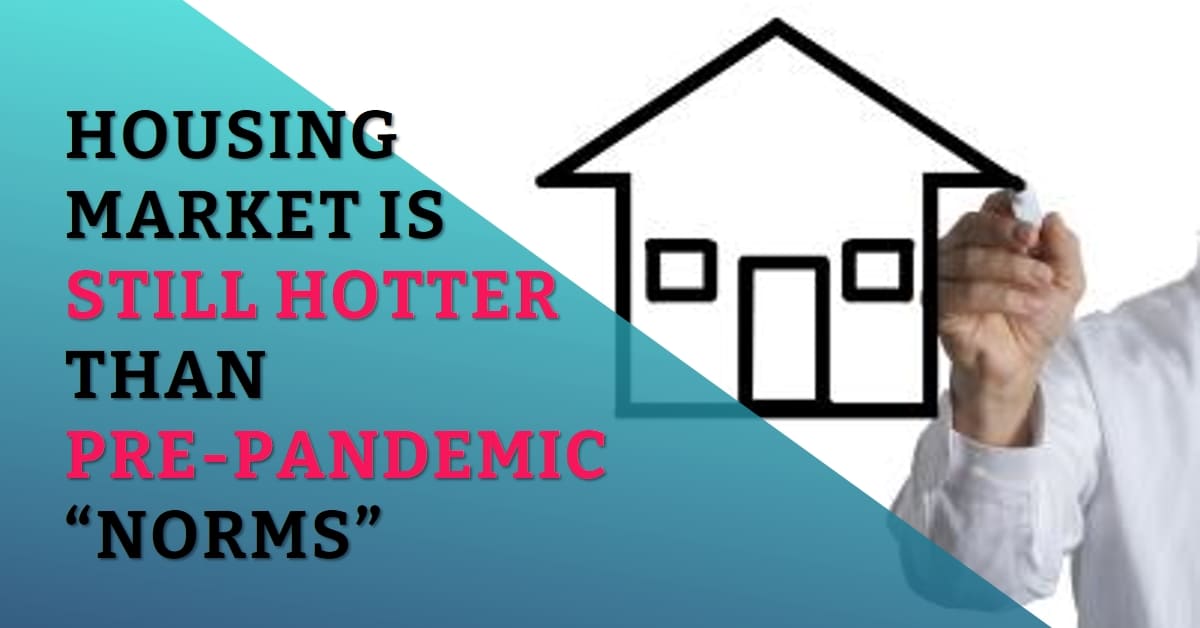Is the real estate market still hot? The latest Insights into the housing market from Zillow show some interesting trends. The data suggests a nuanced scenario where buyers are experiencing some relief, homeowners are breaking free from “rate lock-in,” and the market is experiencing both challenges and opportunities. The real estate market has seen a notable shift from the demand-driven peaks of the pandemic era.
While The competition has cooled down from its raging heights, The US real estate market is still somewhat more intense than before the pandemicHomes are now selling about 50% faster, and more of them at a higher price. However, this increased pace comes with fewer choices and higher costs for potential buyers.
Buyers are benefiting from significant savings due to a drop in mortgage rates from their 23-year high in October. However, the unpredictability of mortgage rates underscores their critical role in determining appreciation and affordability, especially for first-time buyers, in the year ahead. Encouragingly, data suggests that the rate lock-in is being loosened for some homeowners, signaling their willingness to get back into the market.
Homeowner sentiment and sales trends
A recent survey from Zillow sheds light on homeowner sentiment. It found that 21% are considering selling their home within the next three years, a significant increase from last year’s figure of 15%. Interestingly, this propensity to sell is consistent among homeowners with mortgage rates above and below 5%, a change from six months ago when higher mortgage rates were a more important factor in the decision to sell.
This trend suggests that more homeowners with lower interest rates are warming to selling, while those with higher interest rates are likely to have purchased their home more recently. Consequently, current mortgage rates appear to be a less critical factor when considering a sale.
Real estate values: A mixed picture
Looking at home values in December, the price of a typical home in the U.S. was $344,000, with a monthly mortgage payment of $1,790, assuming a 20% down payment. However, monthly home value appreciation varied across major metropolitan areas.
- Increased values: New York (0.2%), Las Vegas (0.1%), Miami (0.1%), Riverside (0%)
- Reduced values: Minneapolis (-1.1%), New Orleans (-1.1%), Milwaukee (-1.1%), Buffalo (-1.1%), San Antonio (-1%)
On a year-over-year basis, home values are rising in 43 of the 50 largest metropolitan areas, with the highest increases in Hartford (11.7%), San Diego (8.4%), Milwaukee (7.9%), Providence (7.9%) and Boston (7.5%). However, home values declined in seven major metropolitan areas, with New Orleans (-8.1%) and Austin (-7.2%) seeing the largest declines.
In particular, typical mortgage payments have increased 7.5% year over year and a whopping 106.5% since pre-pandemic times.
New offers and inventory dynamics
The market has seen a 30.2% decline in new listings nationwide since November, a typical trend for this time of year. However, year-over-year, new listings are up 2.1%, an improvement from the low of 35% in April. Despite this positive trend, new listings are still 14.5% below pre-pandemic norms.
Inventories fell 9.7% month-over-month in December, up 0.6% year-over-year. While this signals a slow but steady recovery from a 45.8% deficit in May, inventories are still 36% below pre-pandemic levels. Major markets such as Las Vegas (-35.2%), Seattle (26.9%) and Sacramento (-25%) saw significant year-over-year inventory declines.
Market competition and price dynamics
Despite a cooling market, homes are still closing at a rate 50% faster than pre-pandemic levels. The share of homes selling above list price fell to 29.4% in November, down 2.4 percentage points from the previous month but still higher than pre-pandemic levels.
Discounts, typically less popular in winter, were present in just under 16% of listings in December, marking the lowest level since April 2022. Year-on-year, the share of discounted listings declined in 46 of the top 50 markets, indicating a trend toward more competitive pricing strategies.
Trends in the rental market
If we focus on the rental market, the typical U.S. rent is $1,957, with annual rent growth of 3.3%, which has remained stable since August. Metro areas in the Great Lakes, Midwest and Northeast regions, led by Providence (7.1%), Cincinnati (7.1%) and Hartford (7.1%), saw the strongest annual rent growth.
In summary, the December Housing Market Report paints a complex picture of a real estate landscape characterized by changing dynamics, evolving homeowner sentiments, and regional fluctuations in property values and rental trends. Looking ahead to 2024, the real estate market appears poised for a mix of challenges and opportunities, underscoring the importance of staying informed and adaptable in the ever-changing real estate landscape.

